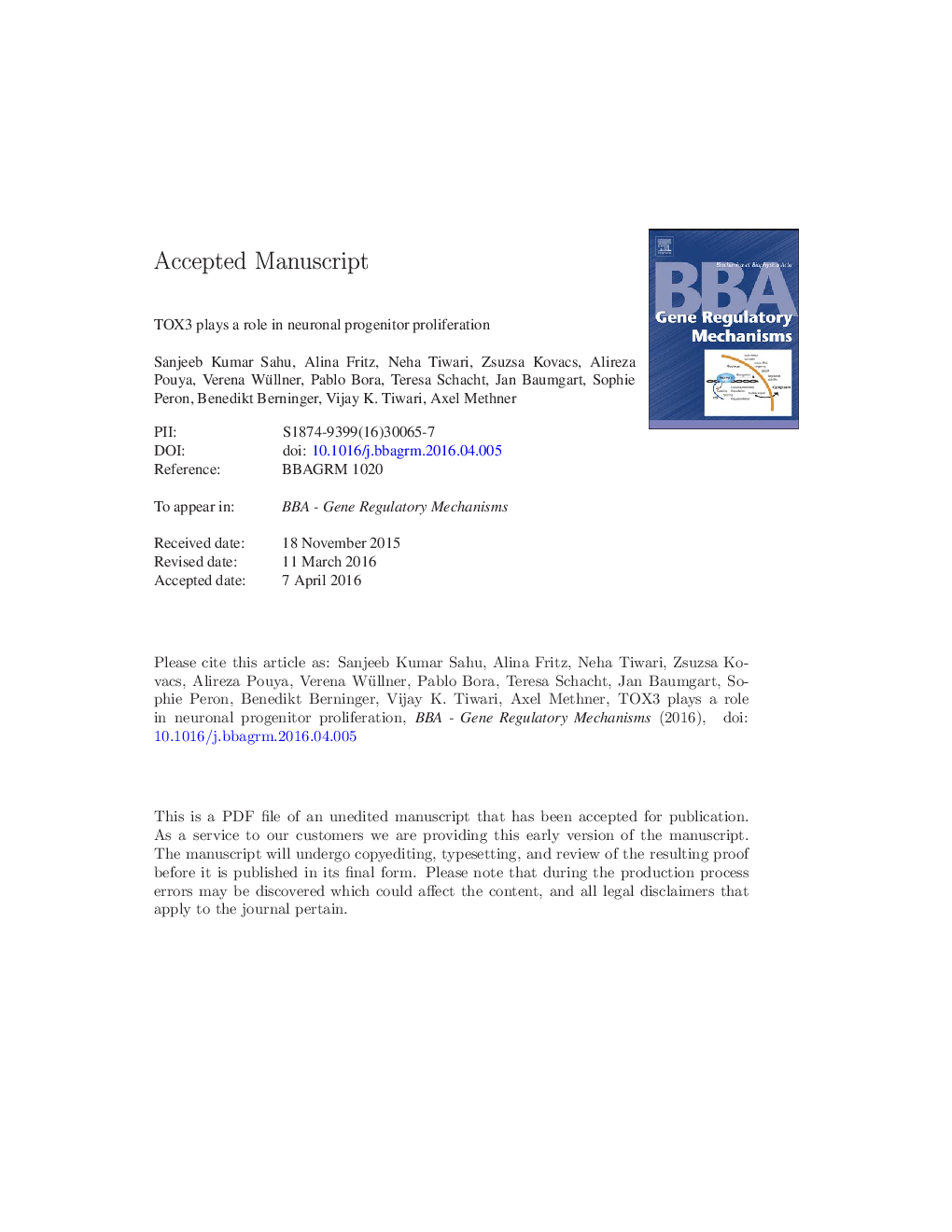| Article ID | Journal | Published Year | Pages | File Type |
|---|---|---|---|---|
| 10798958 | Biochimica et Biophysica Acta (BBA) - Gene Regulatory Mechanisms | 2016 | 22 Pages |
Abstract
The human genomic locus for the transcription factor TOX3 has been implicated in susceptibility to restless legs syndrome and breast cancer in genome-wide association studies, but the physiological role of TOX3 remains largely unknown. We found Tox3 to be predominantly expressed in the developing mouse brain with a peak at embryonic day E14 where it co-localizes with the neural stem and progenitor markers Nestin and Sox2 in radial glia of the ventricular zone and intermediate progenitors of the subventricular zone. Tox3 is also expressed in neural progenitor cells obtained from the ganglionic eminence of E15 mice that express Nestin, and it specifically binds the Nestin promoter in chromatin immunoprecipitation assays. In line with this, over-expression of Tox3 increased Nestin promoter activity, which was cooperatively enhanced by treatment with the stem cell self-renewal promoting Notch ligand Jagged and repressed by pharmacological inhibition of Notch signaling. Knockdown of Tox3 in the subventricular zone of E12.5 mouse embryos by in utero electroporation of Tox3 shRNA revealed a reduced Nestin expression and decreased proliferation at E14 and a reduced migration to the cortical plate in E16 embryos in electroporated cells. Together, these results argue for a role of Tox3 in the development of the nervous system.
Related Topics
Life Sciences
Biochemistry, Genetics and Molecular Biology
Biochemistry
Authors
Sanjeeb Kumar Sahu, Alina Fritz, Neha Tiwari, Zsuzsa Kovacs, Alireza Pouya, Verena Wüllner, Pablo Bora, Teresa Schacht, Jan Baumgart, Sophie Peron, Benedikt Berninger, Vijay K. Tiwari, Axel Methner,
